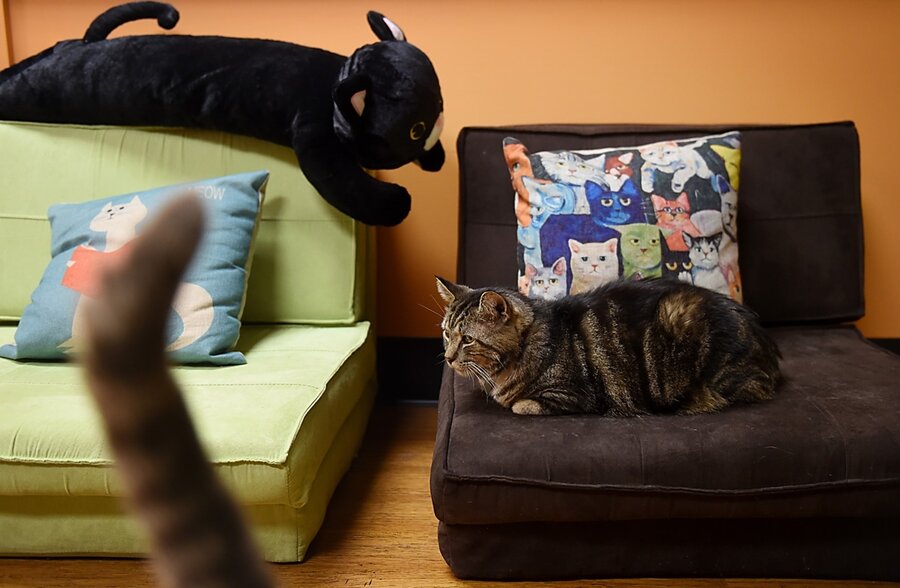Cat café study shows what cats and physicists have in common
Loading...
Anyone who has seen a cat staring at them intently has probably wondered – does that cat know more than it is letting on?
The answer, according to a Japanese study published online Tuesday, is probably yes.
Researchers tested a house cat’s knowledge of physics and cause-and-effect logic, reporting the feline’s surprisingly high scientific competency in the Springer journal of Animal Cognition.
The team’s previous work with cats showed the felines listen for objects hidden inside or nearby a can, a pipe, or cluster of bushes. Researchers theorized this ability helped make house cats the effective hunters they are because they use their highly attuned hearing to predict the location of hidden prey.
To test the theory, researchers designed an experiment called an “expectancy violation procedure.” But they used several of Japan's famous cat cafes to do it, which enabled them to experiment with 30 cats in a familiar environment.
"We recruited cats and owners of cat cafés through a personal acquaintance network," researchers explained in the study. "Each café had a separate room where we could test subjects individually."
Alone with a cat and its owner, an experimenter shook a container near the cat. The experimenter manipulated the specially designed container so it sometimes rattled and sometimes did not, then upended it to reveal whether it contained a hidden object. The cats appeared interested when the shaking produced a rattle, but puzzled when an object’s appearance did not correlate with sound.
After analyzing videos of the encounters, researchers determined that the cats were more interested in the container when the shaking produced a noise, staring to see whether something would come out of it. They continued to stare when the container seemed to break the laws of physics, yielding an object but no sound, or vice-versa.
“Cats use a causal-logical understanding of noise or sounds to predict the appearance of invisible objects,” lead author Saho Takagi said in a press release.
This sort of study shows cats do have stronger scientific understanding than suspected, and researchers believe this reveals cats have a basic understanding of the laws of physics.
"This study may be viewed as evidence for cats' having a rudimentary understanding of gravity," they wrote in the study.
The cat's ability to understand basic gravitational principles and logic shows they were originally adapted to more competitive environments than cat cafés, researchers concluded. House cats can be ruthless hunters, and their grasp of physics helps.
Listening, rather than looking, for prey enables the cat to stake out a hidden vantage point, even in the dark. The cat’s reliance on hearing has probably even contributed to exaggerated claims about cats seeing in the dark.
It also sets them apart from apes, who were expected to perform with similar excellence on equivalent studies but who, it turned out, look rather than listen for clues. To hunt effectively in the twilight hours, however, a cat needs better hearing than a primate.
The team expects future research to determine how sensitive a cat’s hearing to the sounds made by hidden objects, and whether the cat can tell how large or how plentiful the hidden objects might be.








